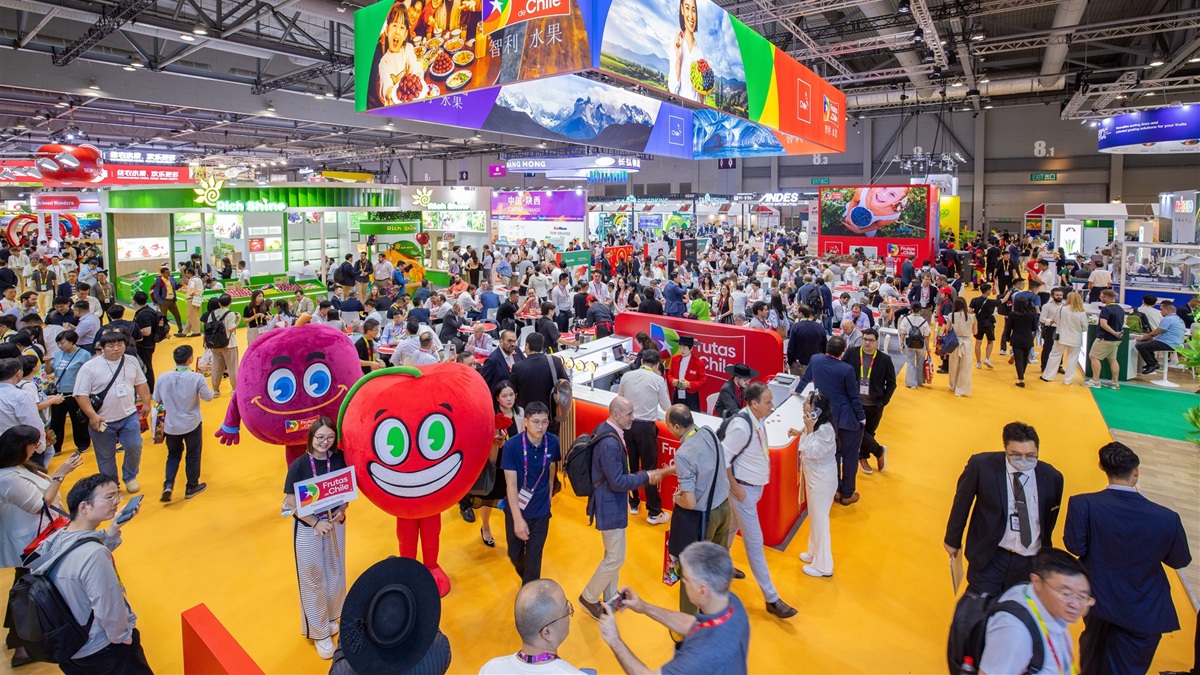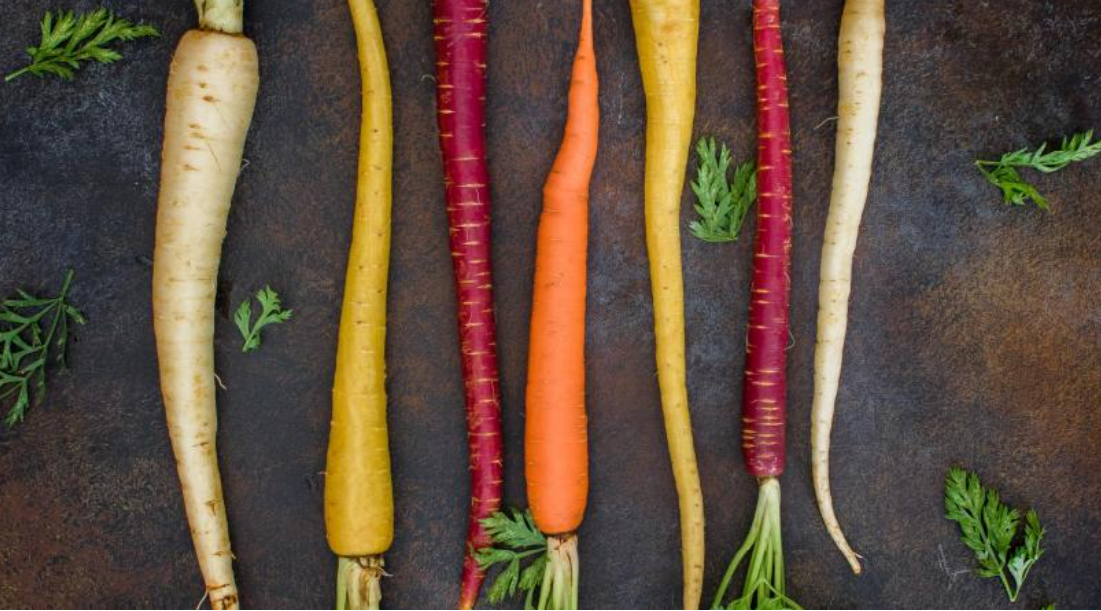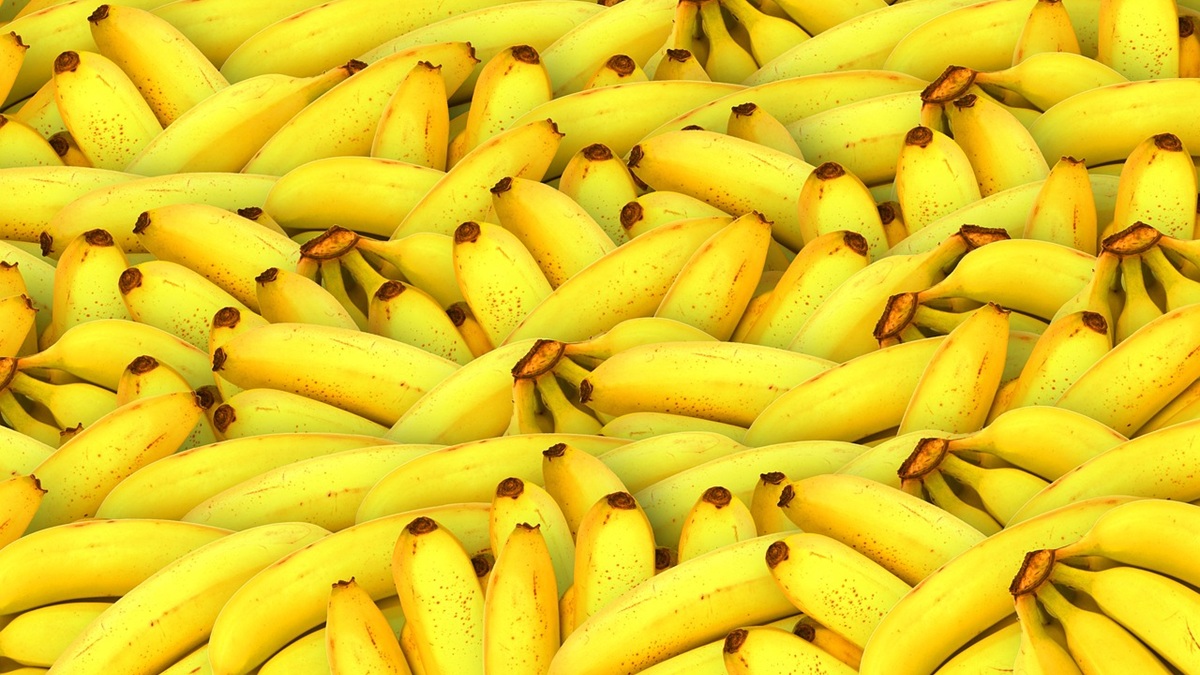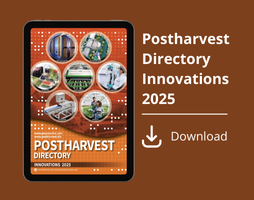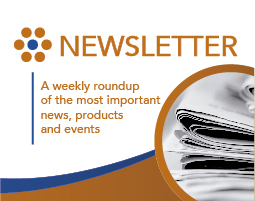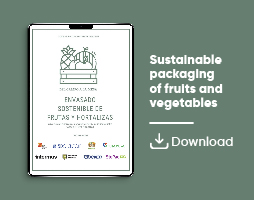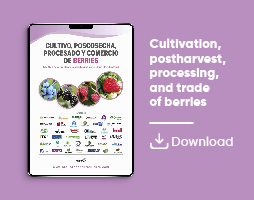Actualidad
Heat treatments, eco-friendly strategies that improve quality and food safety standards
HTs can stimulate the host defense responses in fruit tissue ¡s - The review considers the effect of HTs in general, and specifically on peach, kiwi and citrus fruits
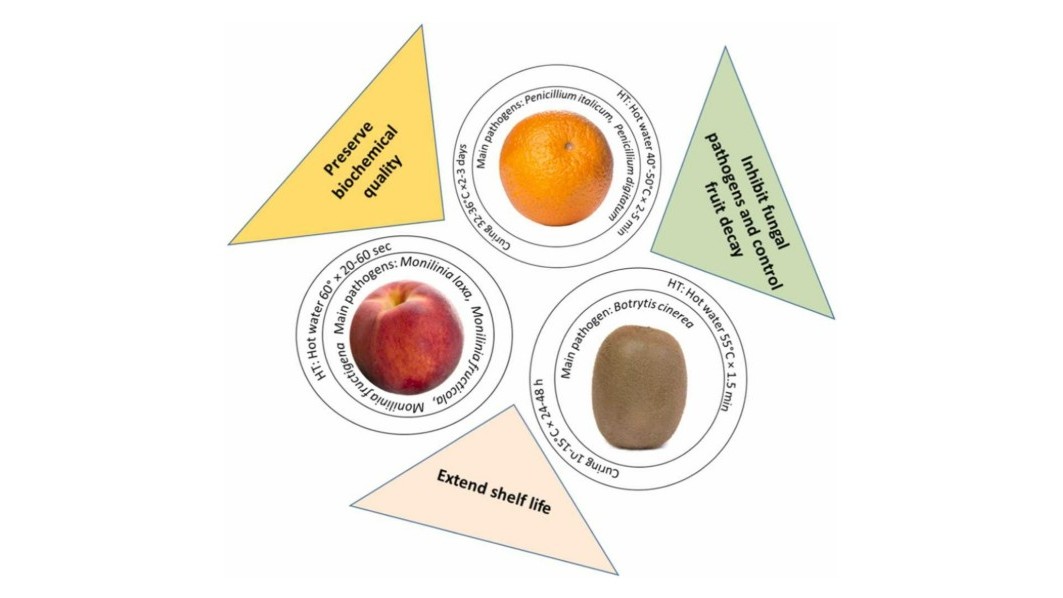
Redaccion
The increase in restrictions on the use of synthetic fungicides has led to the adoption of new eco-friendly strategies that guarantee high quality and food safety standards, such as heat treatment (HT).
This review focuses on the main HTs used to preserve peach, kiwi and citrus fruits from fungal infections during the postharvest phase.
The mechanisms of action of HTs on fruits rely on
- induced resistance through genes regulation, and
- with a direct inhibition of fungal pathogens.
Among the HTs, hot water (HW) and air treatments are mainly considered alongside 'curing' to manage postharvest infections caused by Monilinia spp., Botrytis cinerea, and Penicillium spp.
The HTs were effective in controlling fungal diseases and improving fruit quality, nutritional value and shelf life.
Consumer safety is ensured by HT, but this strategy should always be considered as part of an integrated management of postharvest fungal diseases, since HT alone does not provide complete decay control.
The development of time × temperature combination remains the main challenge of HTs, to keep fruit quality and resistance during postharvest stage, even considering the evolution of the effects of agronomical approaches and of the phytosanitary management.
Introduction
The risk of fungal diseases occurring during the postharvest phase is addressed mainly through pre harvest fungicide treatments (Ippolito and Nigro, 2000). However, recent regulatory policies and the consumer demand are aiming for healthier and more sustainable foods, potentially reducing the synthetic product use, both in pre and postharvest stage.
The European Green Deal, which includes the proposal to reduce the use and the risk related to the application of synthetic pesticides by 50 % until 2030 will further promote this trend, together with the increasing request of retailers of limit of pesticide maximum residue level (MLR), considerably lower than the legal threshold (Romanazzi et al., 2022).
These actions have resulted in an increasing demand and use of alternative pre and postharvest disease control means and a change in disease management, that tend to prevent the infection and also to increase the host resistance (Prusky and Romanazzi, 2023).
In postharvest stage, physical means and in particular heat treatments (HTs) may represent a valid approach due to the versatility with which they can be applied: hot water (HW) dips, rinses or brushing, vapour, and hot air (HA) (Di Francesco et al., 2018; Lurie at al., 1998).
In addition, HTs can have a twofold effectiveness against fungal diseases: preventative and curative (Chen et al., 2015). HTs can stimulate defense responses in fruit tissue (Romanazzi et al., 2016) by the production of antifungal substances, the enhancement of wound healing, the induction of PR proteins, or the synthesis of cell wall hydrolytic enzyme inhibitors (Schirra et al., 2000, Di Francesco et al., 2018).
The heat can directly inhibit the pathogen by killing or inactivating the spores or slowing germ tube growth, consequently reducing disease development (Liu et al., 2012).
HTs can also inhibit fruit ripening, induce resistance to chilling injuries, and extend product storability (Fallik, 2004).
A partial melting of the wax of fruit cuticle may be caused by HTs, so a mechanical barrier is provided at the sites where pathogens can penetrate, such as microcracks (Lurie, 2006).
Further, HTs may stimulate lignification of the cell wall (Lurie, 2006) and induce production of phenolic compounds (Chen et al., 2015).
However, among the methods, heat applied as forced HA or by dipping in HW appears to be the most promising (Di Francesco et al., 2021, Di Francesco et al., 2022).
In the early 20th century, postharvest HTs were used commercially to control fungal diseases and insect infestations in horticultural crops (Schirra et al., 2000). Several types of HT machines are already operating, bringing several substantial benefits in particular in citrus fruits storage (Ben-Yehoshua et al., 2000).
The aim of this review was to summarize the available information on the use of HTs to control postharvest peach brown rot, kiwifruit gray mold and citrus green and blue molds, among the most prevalent and economically damaging diseases during the postharvest phase. The causal agents of these three diseases (Monilinia spp., Botrytis cinerea, Penicillium spp.) also share a latent infection period, making them particularly dangerous and difficult to manage during the cold storage.
Contents
2. Heat treatments (HTs)
2.1. Hot water (HW)
2.2. Hot air (HA)
2.3. Curing
3. Mechanisms of action of HTs
3.1. Fungal pathogen inhibition
3.2. Host structural and physiological responses
3.3. Host genes regulation
4. How HTs affect fruit quality and tolerance to chilling injury
5. HTs effectiveness against Monilinia spp. of stone fruits
6. HTs effectiveness on Botrytis cinerea of kiwifruit
7. HTs effectiveness on Penicillium spp. of citrus fruits
8. Conclusions
Looking forward, HTs are set to play a key role in organic treatments, particularly given the limited availability of fungicide treatments.
This is going to have a significant impact on the postharvest phase because HTs not only reduce infections, but could also have beneficial effects on fruit resistance to cold damage (Abu-Kpawoh et al., 2002, Liu et al., 2012, Woolf et al., 1997).
However, it is essential to deepen knowledge on the effects of heat to avoid phytotoxic outcomes by maintaining fruit quality characteristics and at the same time effectively inhibiting pathogens and disease development.
The activity of HTs depends at least on two components, as described above: the first consists of a direct inhibition on fungal inoculum (spores and/or mycelium) on fruit epicarp; the second is often considered an indirect action mediated by a stress response that induce disease resistance in fruits.
To better manage fungal diseases with HTs, it is important to consider all components of the postharvest systems: the host and its microbiome, the pathogen, and the environment.
The development of time × temperature combination remains the main challenge to keep fruit quality and resistance during postharvest stage.
Regarding this, dedicated protocols should be developed for new varieties, for fruit exposed to different cultivation techniques as well as treatments with biostimulants and the latest plant protection products.
Source
Heat treatments for the control of postharvest decay of fresh fruit: Case studies of peach brown rot, kiwifruit gray mold and citrus green and blue molds
Alessandra Di Francesco, Antonio Ippolito, Gianfranco Romanazzi
Postharvest Biology and Technology Volume 231, January 2026, 113868
https://www.sciencedirect.com/science/article/pii/S0925521425004806
Picture - Main postharvest pathogens of peach, kiwi and citrus fruits, relative effective heat treatments and indirect fruits advantages


